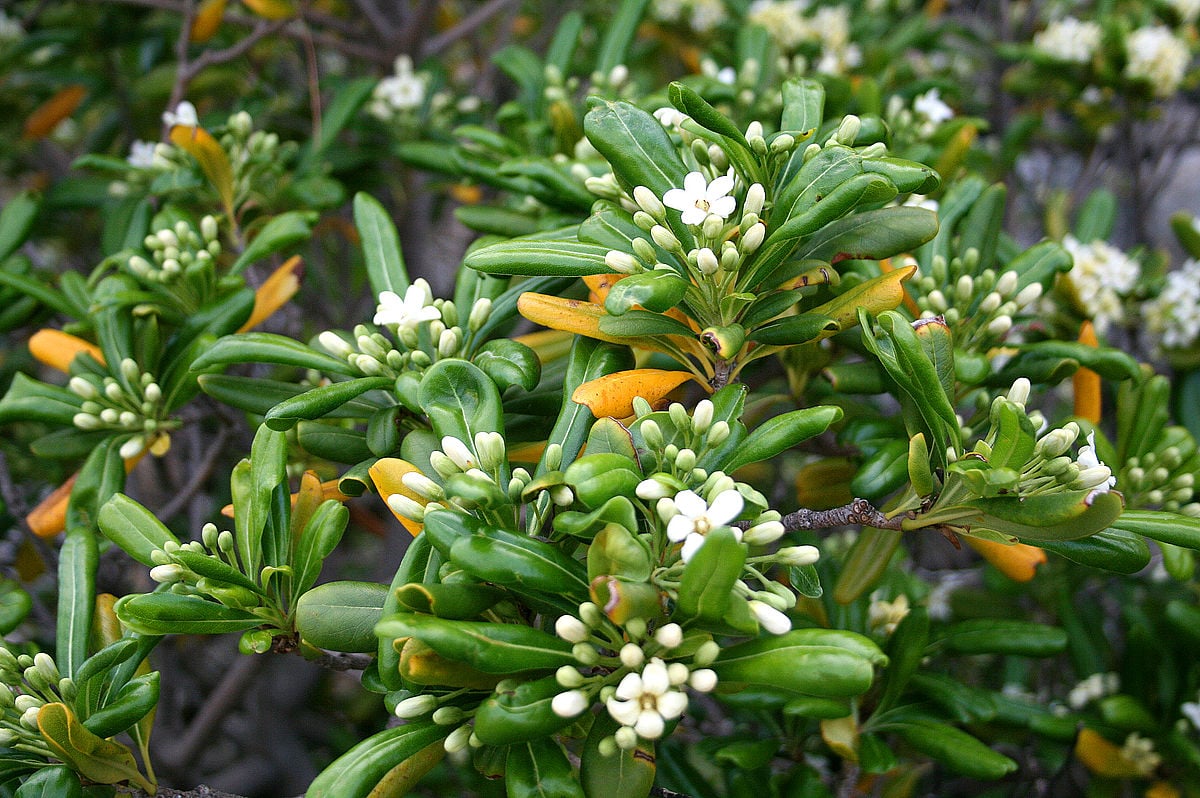Table of Contents
Pittosporum is the name for the shrubs or trees of the Pittosporaceae family, which are characterised by their evergreen foliage and glossy leaves. The plants are fast-growing and neat, with dense foliage. Wild varieties of Pittosporum may grow anywhere between 6 to 100 feet, but several horticulture varieties are grown to a more manageable size. These smaller shrubs are often used in hedges, terrace plants, garden varieties, etc.
There are about 200 species of this plant, all of which are native to South Africa, Australia, New Zealand and South East Asia. However, the plants can be easily grown in places other than the mentioned ones if the climatic and soil conditions are met.
While the requirements to care for Pittosporum are not very complicated, there are specific needs such as when and how to plant or when to prune Pittosporum and how often etc. In this article, these questions will be addressed.
How to Grow and Care For Pittosporum
Knowing how to grow and maintain the plant, such as when to prune pittosporumand such, are two different aspects.
1. When to Plant
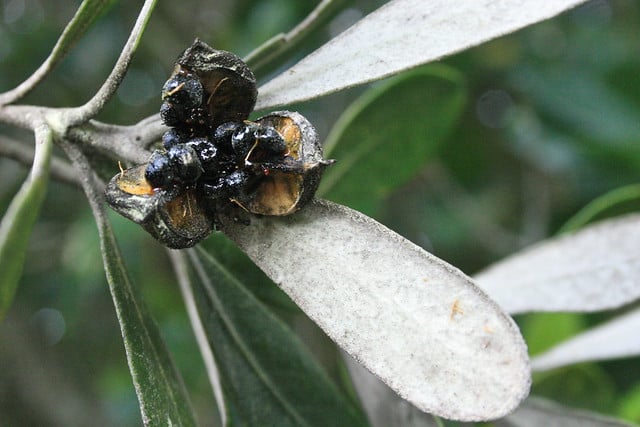
The method to grow this plant does not require any complicated steps. However, one thing must be kept in mind that the seeds are extremely sticky and need to be washed before they are planted. Autumn and spring are the most ideal times of the year to plant Pittosporum. This is because the moisture and warmth will help in the fast germination of the seeds.
If you want to plant in the summer, then that can also be done. Plant the seed before they dry up and water regularly to keep the soil wet. Make sure it is not waterlogged or soggy, just moist. Pittosporum seeds can also be planted in the winter as long as the soil is not excessively wet or frozen.
2. Where to Plant

Pittosporums grow well under sunlight, so the primary need is to find a spot that receives sunlight all year round. In terms of soil types which are most suitable for this plant, any kind which is porous and well-drained can be used. However, the various species of plants in the Pittosporum family are not tolerant of cold and thus need to be protected from winter winds and frost.
If you wish to grow Pittosporum in a place which has a cold climate, then you have to arrange for a sheltered garden or a greenhouse where the plants will be protected. That being said, sunlight is still required, so if you plant pittosporum in a cold place, it should still be able to receive sunlight.
3. How to Plant
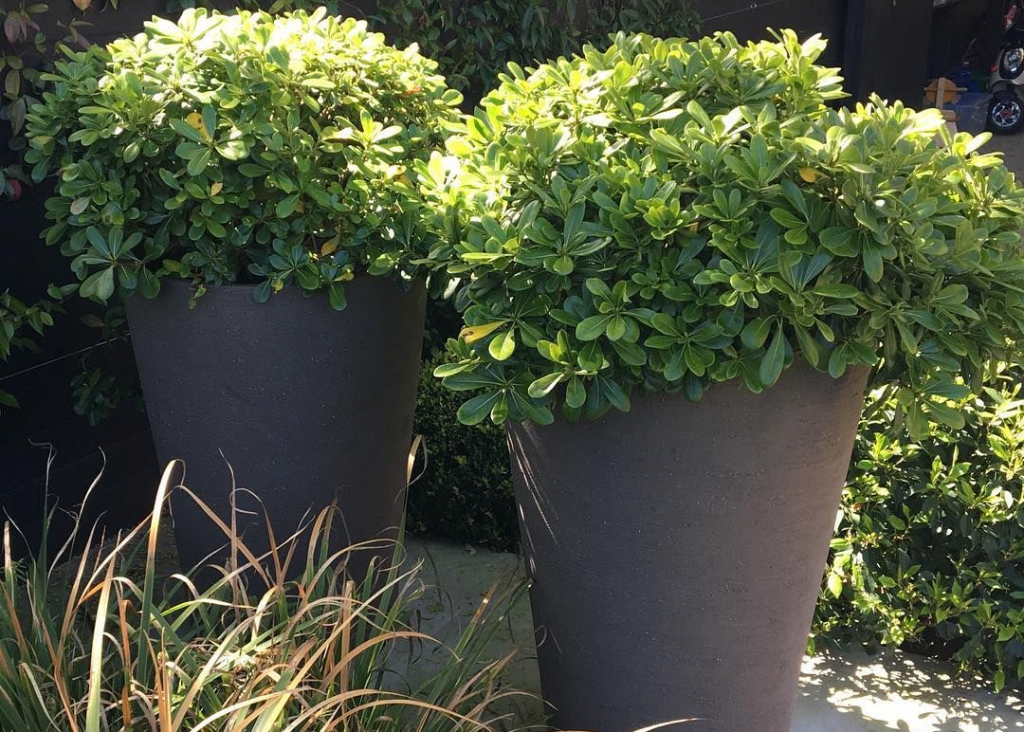
Planting Pittosporum is a pretty straightforward process since they are compatible with many soil types. However, some basic prepping for the soil is needed if you are looking to sow the seeds in open soil as hedge plantations or as shrubbery. Before you plant the seed, dig it in with compost matter or good-quality manure. Since these are porous, they will be good for soil drainage. If, however, the soil in question tends to stay wet, then it is best to build a ridge to plant the seeds on. This will keep the roots of the plant from being wet and rotting.
All you have to do is gather the soil into a mound which is 20-25 cm high and twice that wide and plant the seeds on top of it. Species of the plant that grow to more compact or smaller sizes than the wild varieties are good for container planting. Make sure that the container that you choose is at least 5cm larger than the rootball on all sides. The soil should be mixed in with some peat-free compost. Depending on the size of the plant or the rate of growth, you might have to relocate the plant into a larger container after two to three years.
Maintaining and Caring for Pittosporum
Most Pittosporum varieties do not need any regular maintenance, but a minimal amount still has to be done regularly for the plant to survive and grow to its full potential. Knowing when to prune pittosporum, when to water it or how much to water it etc., are some of the basic things that one should know about when caring for plants of the Pittosporum family. Therefore, some of these questions have been answered for you below.
When and how to Water Pittosporum
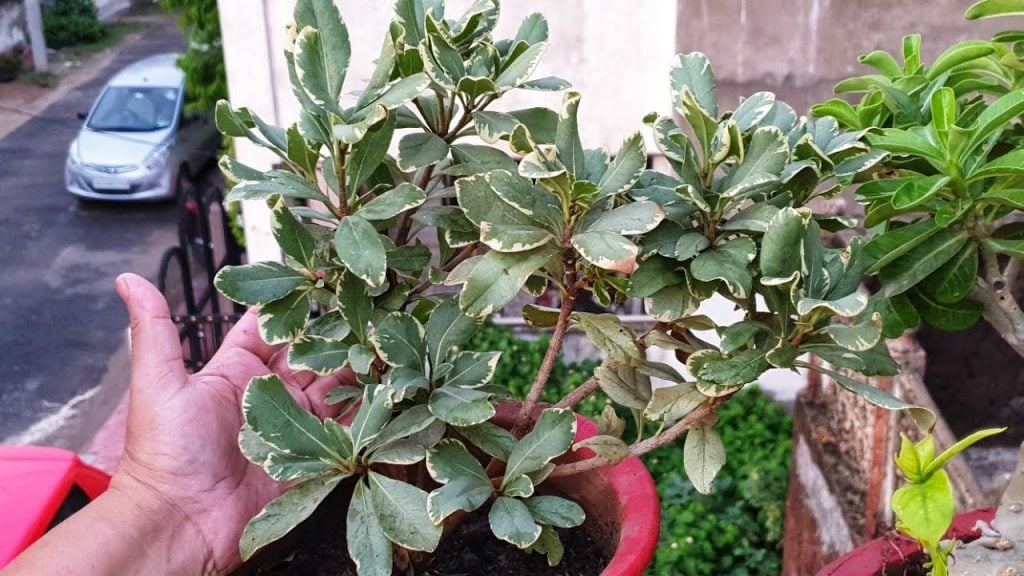
Pittosporum plants take about two to two and half years for their roots to get fully established in the soil. They need some watering during these couple of years, especially during spring and summer when the weather is dry in general. After the roots are well established, these plants do not require much watering. However, if the weather gets too dry and hot, the plants with established roots also should be watered regularly just until the dry spell passes. Larger species of pittosporum that grow up to more than 12 feet take even longer to get roots into the soil. This duration may be as long as four or five years, during which the plants have to be regularly watered regardless of the weather.
The Feeding and Mulching process
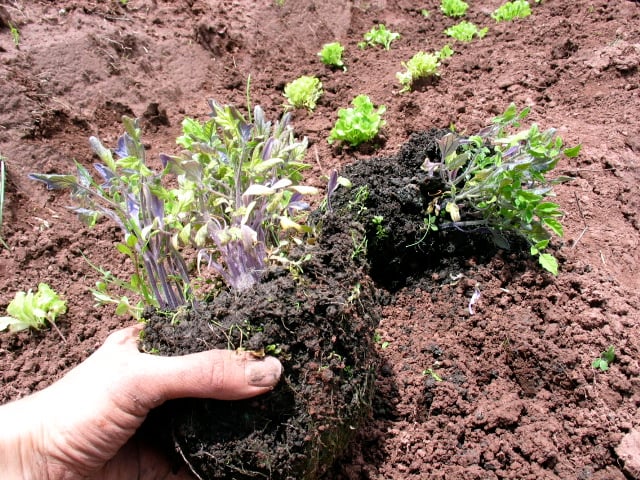
Pittosporum plants are quite low-maintenance, as they do not need much feeding or mulching to keep up the quality of flowers and leaves. However, the growth may sometimes be stunted due to several factors, such as bad quality of seeds, poor soil, bad drainage etc. In such a case, the plant can be fed some fertiliser. Mulching, on the other hand, should be done once a year to make sure that the stems at the base of the plant and the root stays hydrated and moist.
To mulch the plant, all you have to do is surround the base with some organic compost material or manure in a circle. But do not block the base with the mulch, or the roots might rot. What you should do instead is leave the immediate area around the base empty and start mulching after putting some distance between the base and the compost material.
4. When to Prune Pittosporum
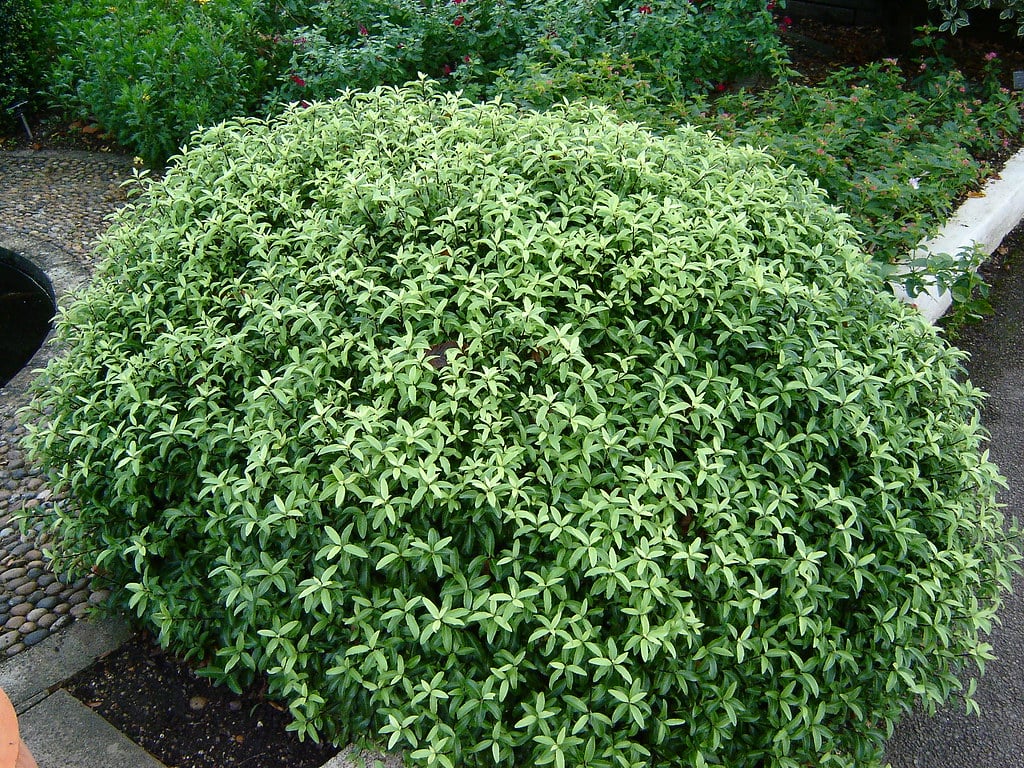
Knowing when to prune pittosporum is one of the most important ways to care for the plants. If planted in hedges and clipped shapes, then mid-spring to late summer is the best time to prune these plants. To make sure that they maintain the shape and density of foliage, pruning must be done at least twice during the growing season. For standalone shrubs, mid-sping is the best time for pruning. Trim out the shoots that grow haphazardly from the outer edges of the foliage. This will make the stem stronger and help the plant grow to its full potential. The shoots and stems tips that are damaged by winter and frost should also be trimmed away at the same time so that new foliage can grow. Apart from the plant’s health, pruning will improve the shape and looks of the pittosporum plants.
Some Common Cultivars of Pittosporum
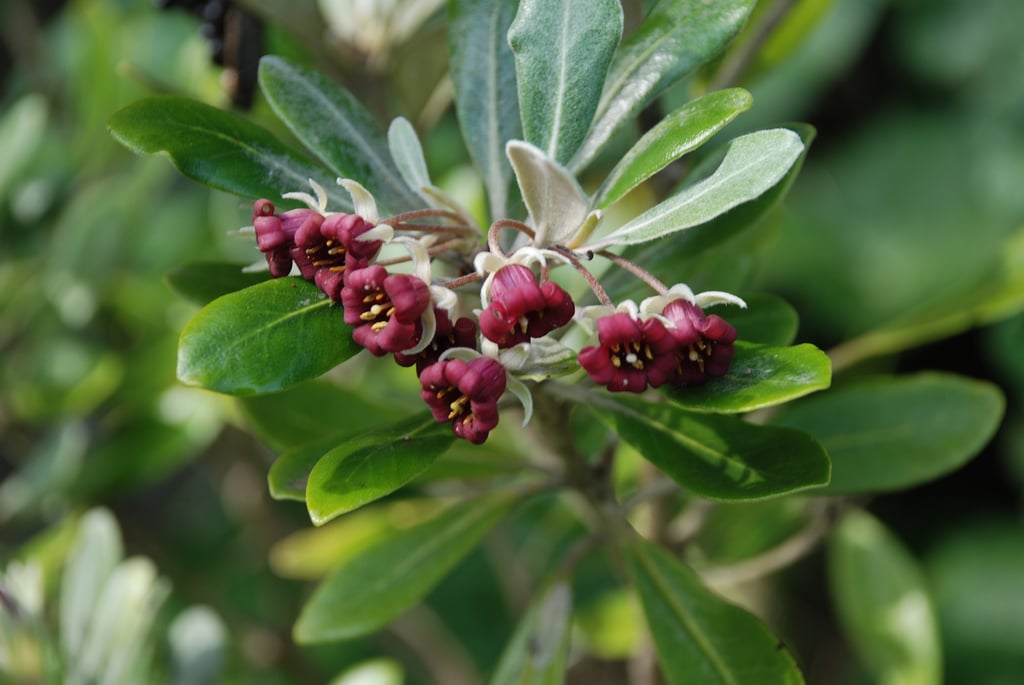
If you have read up to this point, then we can assume that you have gathered a decent idea about growing and caring for Pittosporum plants. Therefore, we took the liberty to introduce you to some of the most common varieties of this plant.
Pittosporum tenuifolium– Also called kohuhu, tawhiwhi, black matipo, or kohukohu, this species of Pittosporum is short and round with black or deep purple stems. The leaves are green and glossy.
Pittosporum tobira – Native to Japan and commonly called the Japanese Mock Orange, this species of the genus Pittosporum is known for its bright orange flowers.
Wheeler’s Dwarf– Small in both height and width, the wheeler’s dwarf is perfect for planting as hedges or as low-foundation plants. It is also just as ideal for being a container shrub.
Pittosporum ralphii– Found around coastal New Zealand, this cultivar is known for its height ( around 13-14 feet ). This grows well in sunny locations.
Pittosporum garnetti– This is a hybrid or a cross between the tenuifolium and ralphii varieties of Pittosporum. A unique feature of this plant is its greyish leaves with whitish-pink edges.
Pittosporum crassifolium – Also known as karo or still leaf, this specie of Pittosporum is also native to coastal New Zealand and thus is tolerant of heat and salt water. The leaves are greyish like the Garnetti type, but the flowers bloom to a very pretty deep red to purple colour.
Wrapping Up
It is no secret that plants often fall prey to many diseases and pests which stop their growth and kill them. While it is necessary to know things like when to prune Pittosporum and how to plant and grow it, it is also important that you know and learns to recognise the signs of a plant under threat.
Leaves dropping off or wilting at an alarming rate can be a sign of damaged roots or waterlogged soil. Do check the soil immediately and resolve the drainage issues. If the problem remains, then the best course of action will be to move the plant somewhere to a better spot or on top of a ridge that you can easily build yourself.
Pittosporum can also be affected by Red spider mites and scale insects, which occur mostly in indoor planting areas such as the greenhouse. Regular exposure to the sun can take care of this problem. Or spraying the plants with an oil-based pesticide can also work just as well.
Frequently Asked Questions (FAQs)
Will the Pittosporum Plants Be Green Throughout the Year?
Yes, all species of Pittosporum are evergreen and will have foliage throughout the year.
Why Is My Pitosporum Hedge Dying?
Check for bugs. If you don’t find any, then check the soil. It is probably waterlogged as a result of excessive watering.
Why Are My Pittosporum Leaves Turning Brown?
Brown leaves are a clear indicator of fungal infestation in the plant, or if that is not the case, then the plant needs more watering. You can use oil-based fungicides such as neem oil to get rid of the fungal infection.
Can I Plant Pittosporum in The Shade?
Ideally, no. This plant grows best when it receives full sunshine, but if you have no choice, then a partial shade can work at best. Placing the plant in complete shade will kill it.
Can I Buy Any Pittosporum Seed for Planting in a Pot at Home?
No. Buy only those that are of a smaller height. These plants need space to grow, and if you buy a variety whose original height is much taller than is possible for a pot or container to hold, the roots will rot, and the plant will die.

